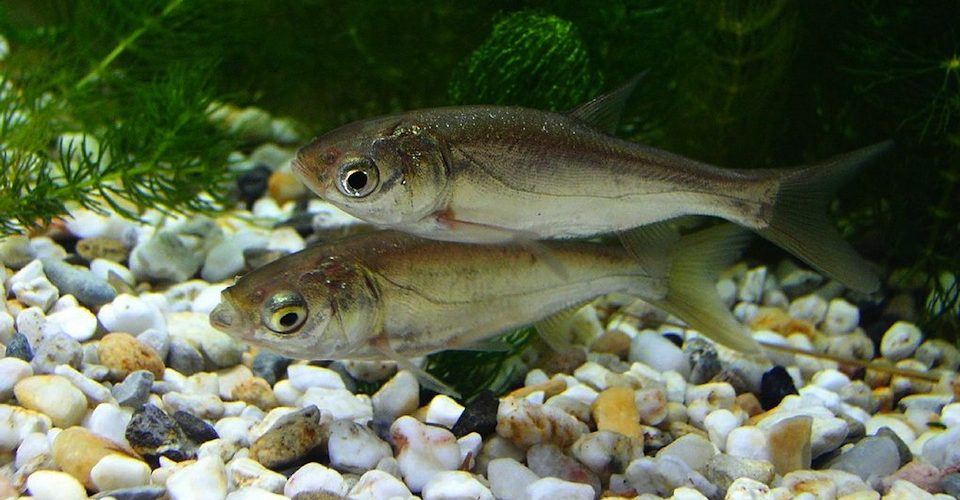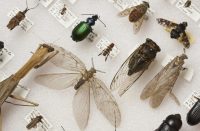Background reading: Asian Carp Alive and Breeding in Lake Erie Tributary
A recent study led by the University of Notre Dame and the US Forest Service confirmed that hydrologically separating the Great Lakes from the Mississippi River watershed would be 95 to 100 per cent effective at containing Asian carp.
Background reading: Asian Carp Alive and Breeding in Lake Erie Tributary
A recent study led by the University of Notre Dame and the US Forest Service confirmed that hydrologically separating the Great Lakes from the Mississippi River watershed would be 95 to 100 per cent effective at containing Asian carp.
“Our study goes beyond just presenting barrier options by putting numbers to how effective various barriers will be, including hydrologic separation and the currently operating electric barrier system,” said report author Marion Wittmann of the University of Notre Dame.
“Authors have theorized that invasive species prevention is more cost-effective than control in protecting ecosystem services,” the report states.
The human engineered pathway between those water bodies came about in the late 19th Century as Chicago attempted to deal with a growing population’s sewage and typhoid problems. Some 114 years later, the canals linking Lake Michigan with the Illinois and Mississippi rivers are seen by many as the largest and most likely entry point for Asian carp and other aquatic invasive species looking to pass from one to the other.
After a Jan. 6 report from the US Army Corps of Engineers found such a scheme could cost upwards of $18 billion and take as much as 25 years to fully implement, independent researchers have begun examining the eight recommendations for combating Asian carp detailed the USACE report to assess the effectiveness of each one.
The USACE report, prepared by the Great Lakes Mississippi River Interstudy Basin (GLMRIS), sketched a range of options for keeping Asian carp out of Lake Michigan via the Chicago Area Waterway System, from $65 million to expand electric barriers over eight years to full blown hydrologic separation of the watersheds, a massive proposal many have criticized for costing far too much and taking far too long to implement.
“Asian carp are so close to Lake Michigan, we don’t have much time right now,” Wittmann said.
Electric barriers, one of the better of the soft approaches to containing Asian carp and other aquatic invasives from moving between the watersheds, were found to be 85-95 per cent effective, according to the study, published in Environmental Science and Technology Journal.
Strobe lights, sounds and air bubbles as alternative soft measures to scare off wandering fish were determined to be anywhere between 75 and 95 per cent effective.
The report speculates that any control measures put in place to deter Asian carp would also be effective at keeping other taxa from moving freely between the Mississippi River basin and the Great Lakes.
“These results could help guide invasive species management in many waterways globally,” they write.
Asian carp in Illinois River found safe enough to eat
Meanwhile, for those catching Asian carp for human consumption, researchers at the Prairie Research Institute’s Illinois Natural History Survey found that concentrations of arsenic, selenium, and mercury in bighead and silver carp in the lower Illinois River do not appear to pose a major health risk.
Published in the journal Chemosphere, the report shows the average bighead or silver carp fillet was below US Food and Drug Administration and Environmental Protection Agency standards for mercury contamination. Some bighead specimens, however, did contain mercury levels high enough to warrant caution from traditionally vulnerable groups like children and pregnant women.
“These fish are low in mercury in comparison to many other commercially available fish,” said Jeff Levengood, lead investigator of the study. “However, as always, consumers need to make informed decisions about their food choices.”
“Kentucky white fish” a growing US export
Advocates for commercially fishing Asian carp found a sympathetic voice in the Wall Street Journal this week when that paper showcased the work of entrepreneur Angie Yu to export large volumes of bighead and silver carp to China.
Two Rivers Fisheries markets frozen “Kentucky white fish” to buyers in China and has so far sold over have a million pounds, relying on willing local fishers to help supply fresh bighead and silver. As a bonus, every Asian carp caught in the Mississippi or Illinois rivers is one less breeding in the wild.
The problem? Creating a market on the back of a species Congress and the Army Corps are attempting to eradicate at a potential cost of billions of dollars.
Biologists have long worried that monetizing the catching and fishing of Asian carp, while a seemingly ideal solution to the problem of over abundance in the wild, would have the adverse effect of requiring a stable and sustainable supply of the fish for businesses to rely on, something that would doom the Mississippi and other rivers to near perpetual dominance by an invasive species.
As anything more than a temporary solution, the idea of marketing Asian carp overseas needs to go back to the drawing board.
Andrew Reeves is the Editor-in-Chief of Alternatives Journal. Overrun, his book about Asian carp in North America, will be published in Spring 2019 by ECW Press. His work has also appeared in the Globe & Mail, Spacing and Corporate Knights. Follow him on Twitter.













